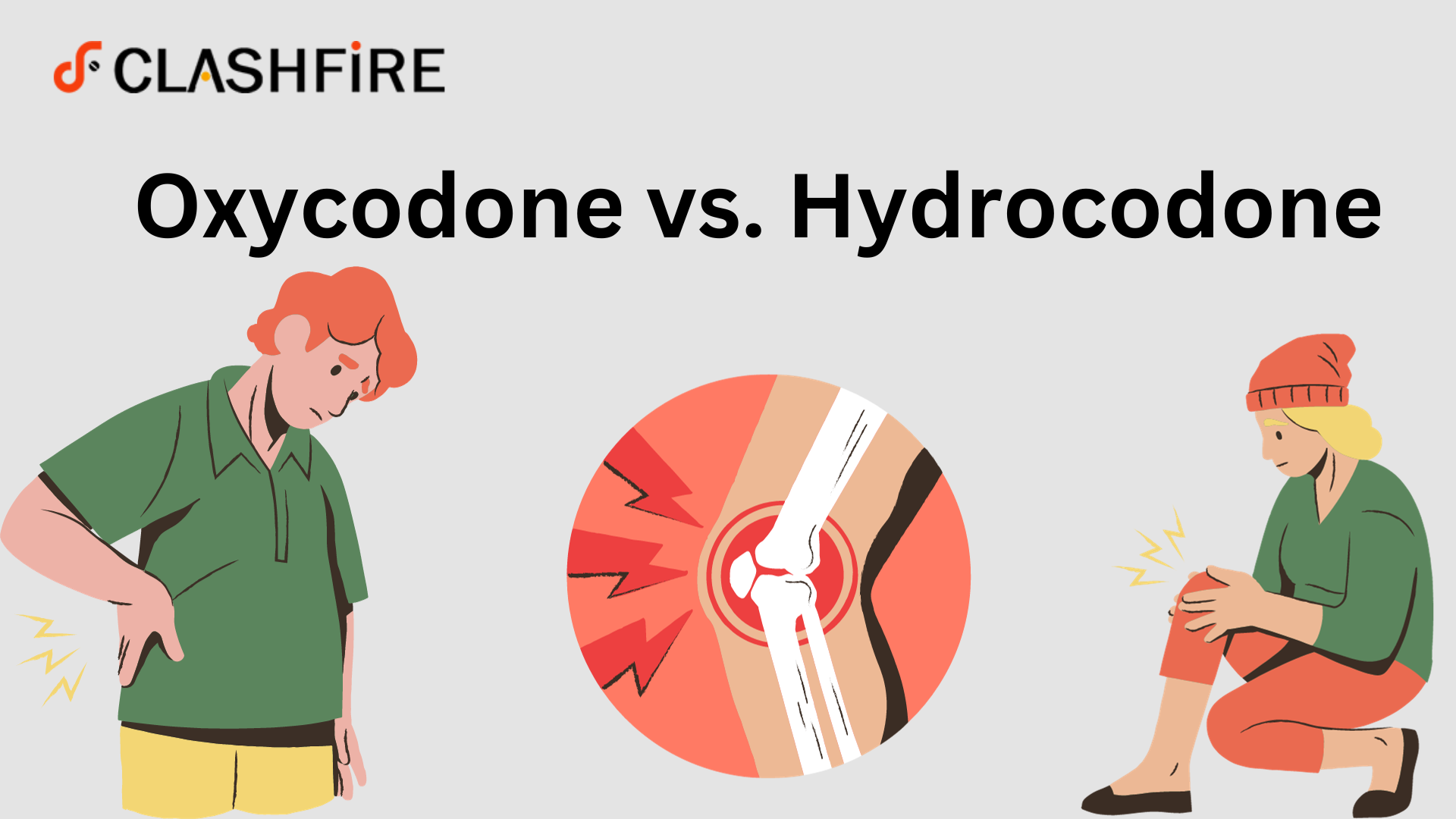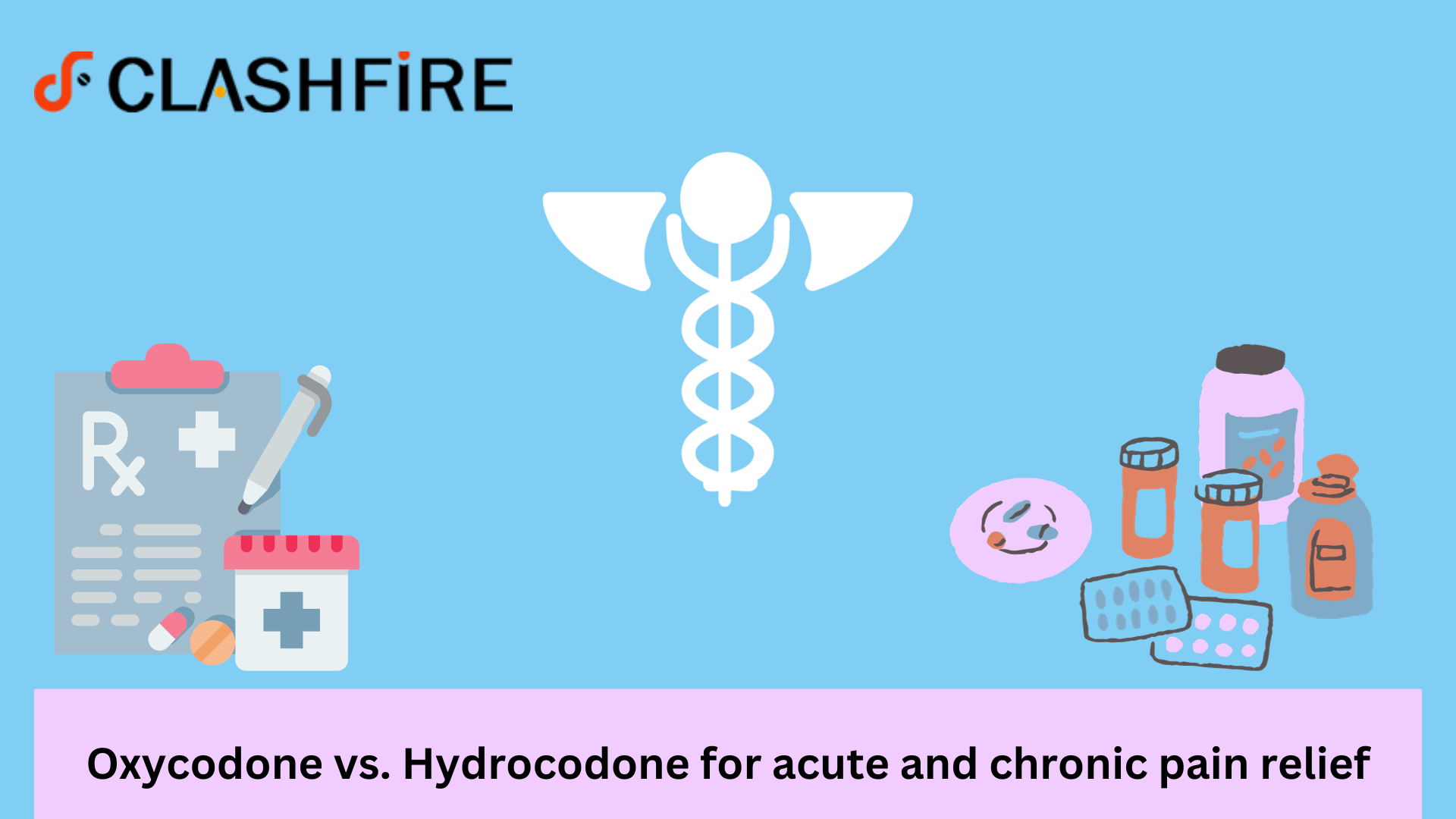Table of Contents
Chronic Pain is a complex and often debilitating sensation that may highly affect a person’s quality of life. Whether you are dealing with acute pain resulting from surgery or injury or chronic pain from conditions like lower back pain or arthritis, finding effective treatment is essential.
Two highly prescribed opioids for pain treatment are Oxycodone and Hydrocodone. In the further section of this blog, we will briefly discuss these drugs. To dive into the depth of the topic, continue reading.
Understanding Oxycodone and Hydrocodone
Oxycodone
Oxycodone is a potent opioid drug that relates to a class of medicine called opioid analgesics. This drug is most commonly prescribed to treat modest to acute pain and is available in various formulations, including extended-release and immediate-release forms.
A few well-known brand names of Oxycodone include Roxicodone, OxyContin, and Percocet (when mixed with acetaminophen).
If you want to buy Oxycodone online to treat your chronic pain effectively, you can choose our pharmacy. Our experienced healthcare experts provide free and accurate consultancy services for all medicines, including Oxycodone.
Hydrocodone
Hydrocodone is another opioid analgesic often prescribed for chronic pain alleviation. It is commonly combined with non-opioid pain relievers like ibuprofen or acetaminophen. A few popular brand names for Hydrocodone-containing drugs include Norco, Vicodin, and Lortab.
You can buy Hydrocodone online from our pharmacy and effectively treat your chronic pain in a short period.
Similarities between Oxycodone and Hydrocodone
Efficacy
Both Oxycodone and Hydrocodone are highly effective in treating modest to acute pain. They function by binding to opioid receptors in the spinal cord and brain, lowering pain perception.
Prescription-only
Both medicines are available only by prescription and should be used under the guidance of an experienced healthcare expert.
Potential for dependence
Both drugs have a high potential for dependence and can be addictive if not taken as prescribed. You should strictly follow the instructions of your healthcare expert to lower the risk of addiction.
Side effects
These drugs share many common side effects, including nausea, drowsiness, vomiting, constipation, and respiratory depression.
Differences between Oxycodone and Hydrocodone

Potency
One notable difference between Oxycodone and Hydrocodone is their potency. Oxycodone is commonly considered to be more potent compared to Hydrocodone.
Consequently, a smaller dosage of Oxycodone can often provide equivalent chronic pain relief than a higher dosage of Hydrocodone.
Formulations
Oxycodone is available in both extended-release and immediate-release formulations. Immediate-release Oxycodone offers rapid chronic pain relief but can need more frequent dosing. Extended-release formulations like OxyContin offer long-lasting pain relief and require less frequent dosing.
Hydrocodone is generally available in immediate-release forms and is often combined with other non-opioid painkillers.
Duration of action
Due to their various formulations, Oxycodone’s XR products may offer chronic pain relief for up to twelve hours or more. On the other hand, IR Oxycodone can stay for almost 4 to 6 hours.
In contrast, Hydrocodone IR-formulations generally stay for 4-6 hours.
Drug combinations
Oxycodone is generally not combined with other non-opioid painkillers, as is common with Hydrocodone. Hydrocodone is commonly found in combination products that include ibuprofen or acetaminophen.
These combinations may increase chronic pain relief but can enhance the risk of adverse reactions associated with the non-opioid components.
You can buy Oxycodone and Hydrocodone online with proper instructions from our clashfire.com
What precautions should I follow while taking these drugs for treating acute and chronic pain?
You should avoid taking Oxycodone and Hydrocodone if you have breathing issues, acute asthma, or a blockage in your stomach or intestinal area.
Misuse of opioid drugs may cause overdose, addiction, or even death. Keep the drug in a place where others cannot get to it for abuse. Taking these drugs during pregnancy can increase the risk of withdrawal symptoms in a newborn baby.
Fatal adverse reactions may occur if you take opioid drugs with alcoholic beverages or with other medicines that cause sleepiness or slow your breathing.
These drugs may stop or slow your breathing. You should avoid taking Oxycodone and Hydrocodone if you have used MAO inhibitors in the previous 13-14 days, such as rasagiline, isocarboxazid, linezolid, or more.
Ask a healthcare expert before taking these drugs if you are breastfeeding an infant. Tell your healthcare expert if you notice acute drowsiness or slow breathing in the nursing child.
If you remember these instructions after buying Oxycodone or Hydrocodone online for chronic pain or severe lower back pain, you will get the best possible outcomes.
Storage details
Store these drugs at room temperature, away from extreme moisture, heat, and sunlight. Keep an eye on your drugs. You should not store these drugs for so long. Just a single dose of expired medicines may cause death in people taking them accidentally or by chance. You can destroy expired medicines by flushing them down the toilet.
Dosing details of Oxycodone and Hydrocodone
The dosing details of Oxycodone and Hydrocodone for acute and chronic pain relief can vary depending on individual factors such as patient tolerance, the severity of chronic pain, and the specific formulation of the drug. Here are general dosing guidelines for both acute and pain relief.
Oxycodone:
Immediate-Release Oxycodone: Typically prescribed for acute pain. The usual starting dose for adults is 5-15 mg every 4-6 hours as needed. The maximum daily dosage is usually around 60 mg.
Extended-Release Oxycodone: Use for chronic pain management. The initial dose is usually lower, such as 10 mg every 12 hours. Your healthcare expert will adjust the dose as needed based on your response.
Hydrocodone:
Immediate-Release Hydrocodone: Commonly prescribed for acute pain. The typical dosage for adults is 5 to 10 mg every 4-6 hours as needed. The maximum daily dose may vary but is often around 60 mg.
Combination Products: Hydrocodone is often combined with non-opioid pain relievers like acetaminophen (e.g., Vicodin) or ibuprofen (e.g., Vicoprofen). In these combination products, the dosing will depend on the specific formulation and the amount of the non-opioid component.
You can buy Hydrocodone in different forms and strengths from our reliable online pharmacy. Here, you can also purchase Oxycodone and treat your chronic pain in a short period.
Conclusion
I hope you have learned many essential facts about these drugs. As mentioned, Oxycodone and Hydrocodone are potent opioid drugs that may effectively relieve chronic and acute pain conditions.
However, their differences in formulations, potency, and combinations with other drugs make them suitable for different patient needs.
If you are about to purchase any of these drugs to treat chronic or acute pain, you must be cautious and follow the instructions provided by your healthcare experts.
